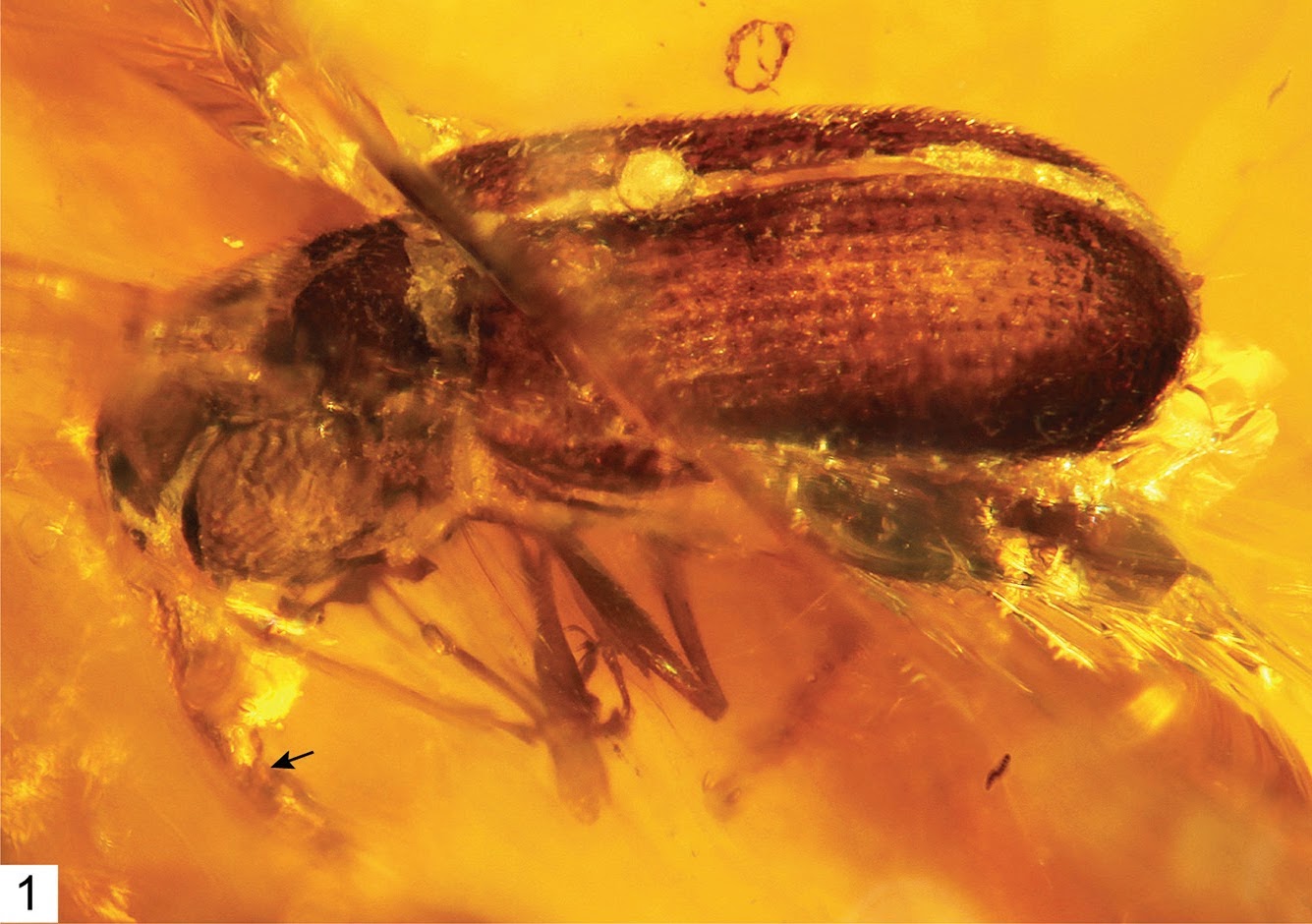Weevils of the genus
Orthotemnus were originally described from New Guinea, and
have subsequently been recorded from Australia, the Seychelles,
tropical Africa and the Russian Far East.
In a paper published in
the journal ZooKeys on 19 January 2015, Youssef Mohamed Omar of the
Faculty of Agriculture at Assiut University and the Institute of Zoology at the Chinese Academy of Sciences, Runzhi Zhang of the
Institute of Zoology at the Chinese Academy of Sciences and Steven Davis of the Division ofEntomology at the Natural History Museum and Department of Ecology &Evolutionary Biology at the University of Kansas describe a
new species of Orthotemnus from Jiangsu Province in China.
The new species is named
Orthotemnus longitarsus, meaning ‘long tarsus’. The
species is named from four male and four female specimens, all
collected from under trees in a park in Zijingshan. The males are
3.29-3.40 mm in length, the females 2.58-2.80 mm. All are reddish
brown in colour.
(Top) Female specimen
of Orthotemnus longitarsus in lateral view.
(Bottom) SEM image of male specimen of Orthotemnus
longitarsus in lateral view. Omar et al. (2015).
See also…
 A Pine Cone Weevil from Cretaceous Burmese amber. Pine Cone Weevils (Nemonychidae) are thought likely to be the oldest
group of surviving Weevils (Curculionoidea), making their understanding
their evolution important for our understanding of Weevils...
A Pine Cone Weevil from Cretaceous Burmese amber. Pine Cone Weevils (Nemonychidae) are thought likely to be the oldest
group of surviving Weevils (Curculionoidea), making their understanding
their evolution important for our understanding of Weevils...
Straight Snouted Weevils (Brentidae) are wood-eating Beetles related to
the True Weevils, found in temperate and tropical regions across the
globe, though they are most diverse and numerous in the tropics. The
classification of the group has changed dramatically a number of times
in the last 20 years, and appears likely to change again.
Palm Weevils of the genus Anchylorhynchus are found from Panama to
Argentina. They have a symbiotic relationship with Palms of the genera
Butia, Cocos, Oenocarpus and Syagrus, with the adults acting...
Follow Sciency Thoughts
on Facebook.




